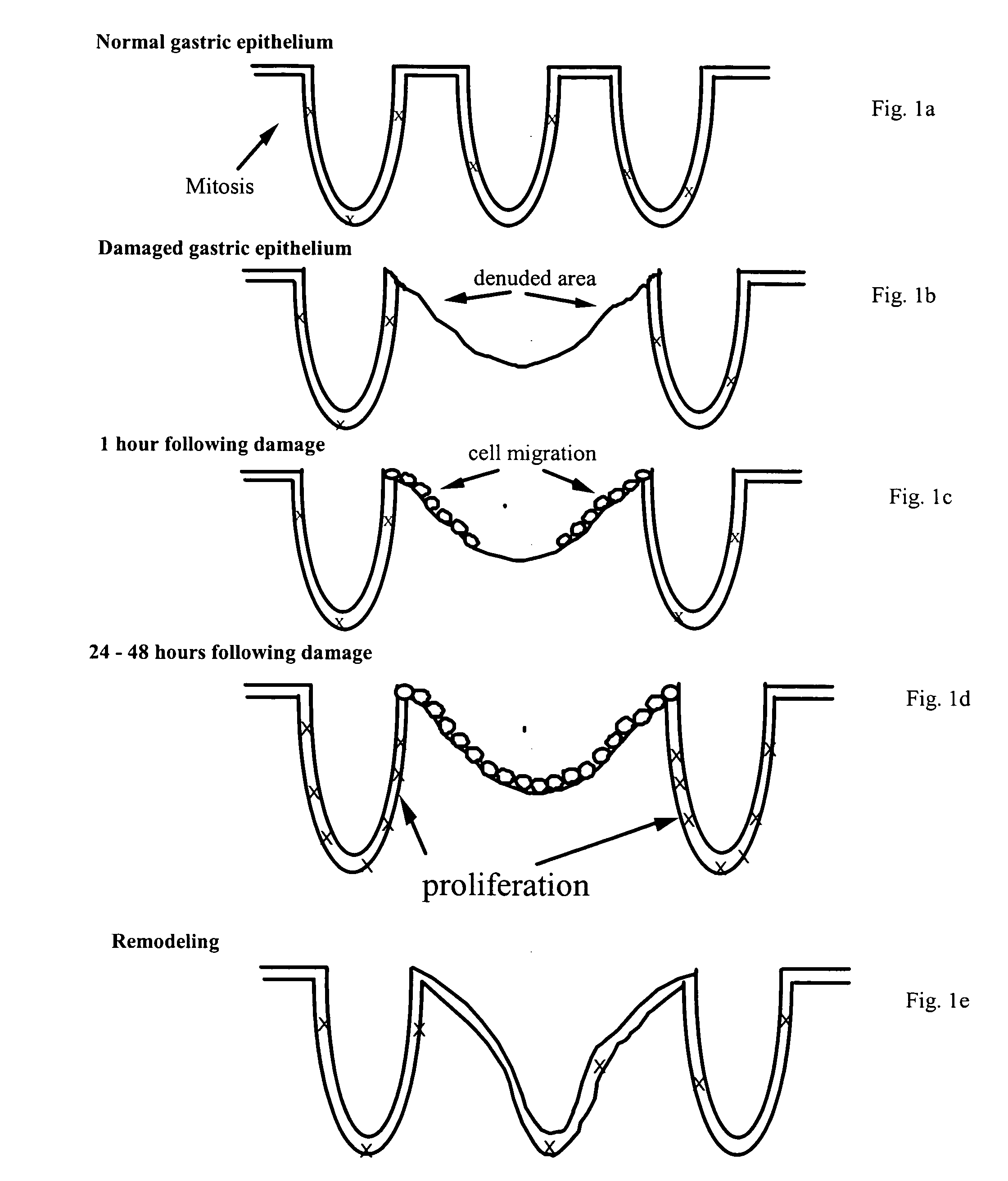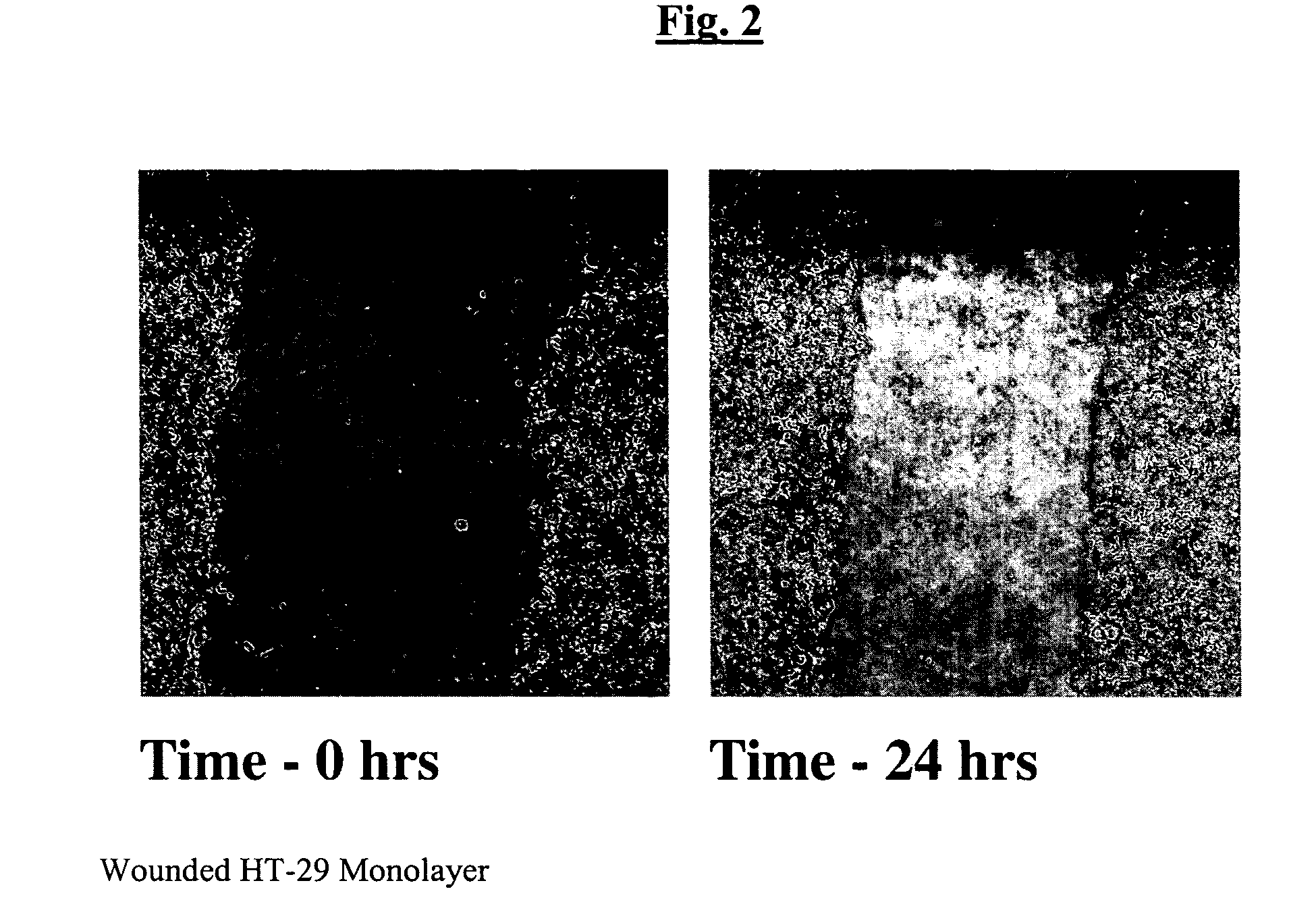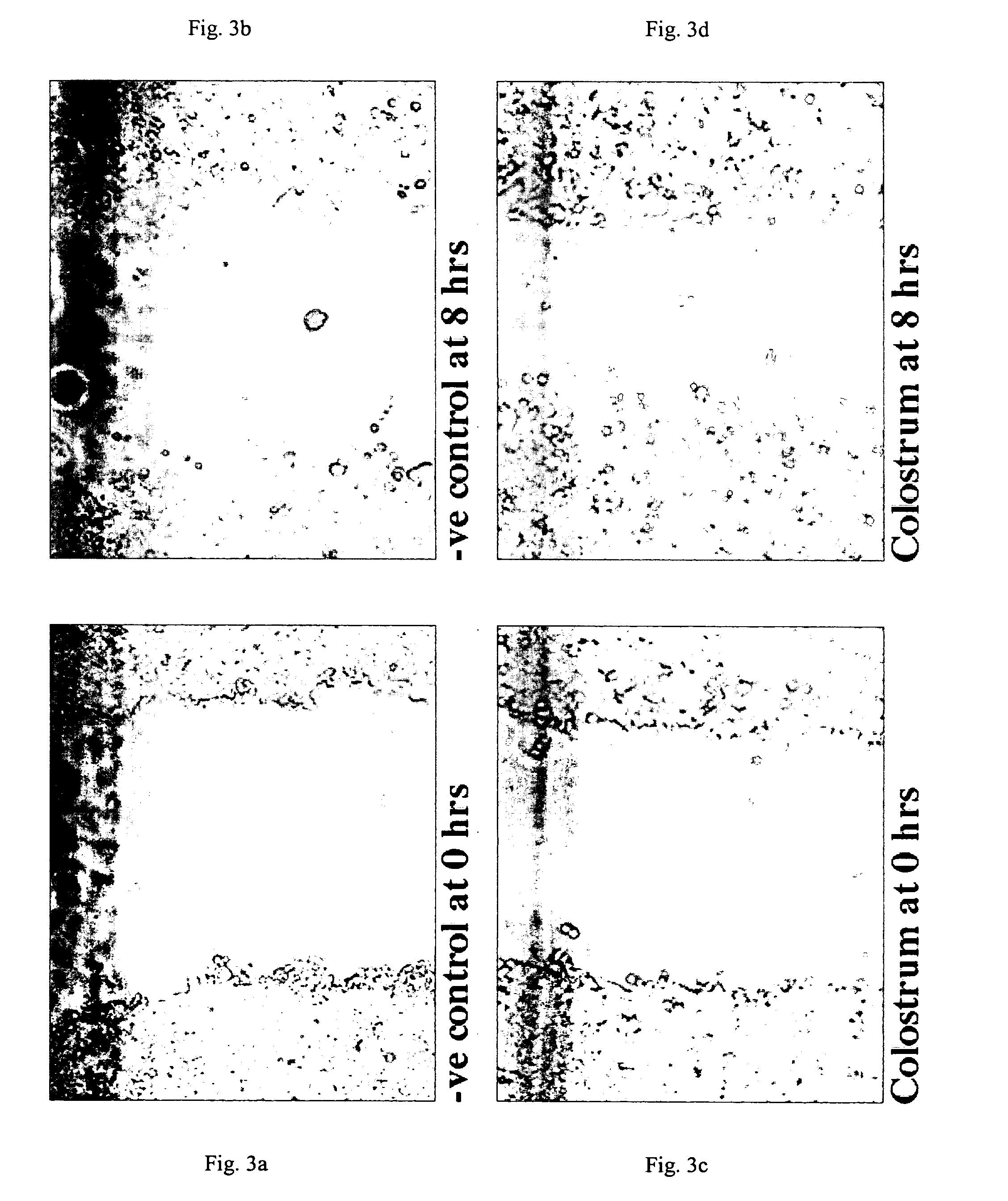Repair and protection factor scoring method for bioactive agents
- Summary
- Abstract
- Description
- Claims
- Application Information
AI Technical Summary
Benefits of technology
Problems solved by technology
Method used
Image
Examples
example i
Effect of Colostrum as a Bioactive
Agent on Cell Migration
[0046] As discussed above, one of the earliest biological repair responses following injury to tissue cells is the migration of surviving cells over the denuded area caused by the injury to reestablish epithelial integrity (See FIG. 1c). Since it is extremely difficult to study this effect upon organ tissue inside a human or animal, cell culture models are commonly used as surrogate markers of this pro-migratory response. Several cell lines are potentially available for performing these studies, which include human colon cells such as HT-29 and caco2 cells, human intestinal lines like HIE cells, and rat intestinal cell lines like RIE6, gastric cell lines like AGS and other similar cell lines such as IEC-6 and IEC 17 cells, T84 and NRK cells. The generality of these results allow them to be applied to the study of cell migration responses for human applications of bioactive agents like colostrum, and for the testing of such p...
example ii
Effect of Colostrum as a Bioactive
Agent on Cell Proliferation
[0052] As discussed above, an increase in the rate of cell division also plays a key role in reestablishing a normal mucosa along the epithelial or endothelial tissue lining following an injury (FIG. 1d). Cell culture models have traditionally been used as surrogate markers for this proliferation response. Because thymidine is a natural constituent of the DNA within cells, thymidine incorporation is commonly used as a marker of proliferation. Cells that are actively dividing will therefore increase their uptake of thymidine in the preparatory state of cell division.
[0053]FIG. 6 demonstrates the results of a typical experiment. The human colonic cancer cell line HT-29 was grown in a solution of DMEM-containing glutamine and 10% foetal calf serum. The effects of three different colostral samples, added at various concentrations, were subsequently tested under serum-starved conditions. In order to assess the percentage of ...
example iii
RPF Scoring Method
[0099] Commercial colostrum obtained from Sterling Technology of Brookings, S. Dak. was used as the bioactive agent to be tested. The HT-29 human colonic cancer cell line obtained from the European collection of cell cultures—UK (www.ecacc.org) was employed as the surrogate cell marker. Using the cell restitution bioassay method described above, the amount of cell migration produced by the same colostrum sample used at a final concentration of 1 mg protein / ml after eight hours of incubation was determined on two separate days (Day 1 vs. Day 2), as shown in FIG. 7. The absolute values of the respective distances of cell migration (μm) at 8 hours are shown in Table I as follows:
TABLE 1Control SampleEGF SampleColostrum SampleDay 159117137Day 270130166
As can be seen from Table 1, the absolute amount of movement in micrometers that the colostrum sample induced was different on the two days (137 μm for the study performed on Day 1 and 166 μm for the study performed o...
PUM
 Login to View More
Login to View More Abstract
Description
Claims
Application Information
 Login to View More
Login to View More - R&D
- Intellectual Property
- Life Sciences
- Materials
- Tech Scout
- Unparalleled Data Quality
- Higher Quality Content
- 60% Fewer Hallucinations
Browse by: Latest US Patents, China's latest patents, Technical Efficacy Thesaurus, Application Domain, Technology Topic, Popular Technical Reports.
© 2025 PatSnap. All rights reserved.Legal|Privacy policy|Modern Slavery Act Transparency Statement|Sitemap|About US| Contact US: help@patsnap.com



